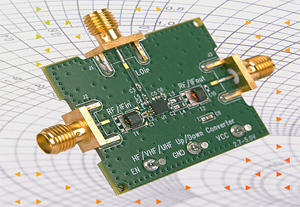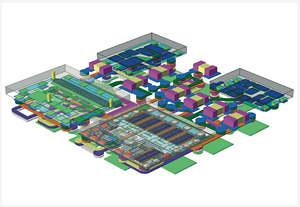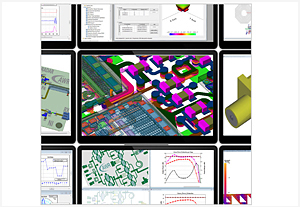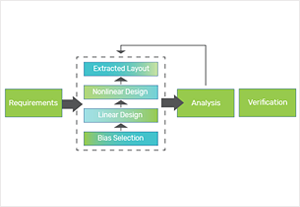RF Design
What is RF Design?
RF design, or radio frequency design, involves the complex process of developing systems, components, and devices that use radio frequency signals to operate. This is crucial in the modern world as it supports the functionality of a wide range of communication technologies, from mobile phones and Wi-Fi networks to radar systems and satellite communications. Experts in RF design work with a complex mix of electronic engineering principles, striving to maximize signal transmission and reception while tackling the challenges posed by interference, signal loss, and the physical properties of the environment. RF designers ensure a seamless data flow across the connected world, enabling real-time communication and interaction with technology from anywhere.
RF Design with Cadence
Cadence RF/microwave solutions enable design teams to build and assemble ICs and interposers, PCBs, and modules from a wide array of process technologies through proven capabilities in its EDA software portfolio. The interoperable platform includes the Cadence Allegro PCB Editor for designing PCBs and systems in package (SiP), the Cadence Virtuoso platform for designing RFICs and modules, and the Cadence AWR platform for monolithic microwave IC (MMIC) and RF PCB IP design.
Tackle challenging RF to millimeter-wave (mmWave) front-end components and wireless subsystems from concept through signoff in silicon radio frequency integrated circuits (RFICs), III-V compound semiconductors, PCBs, and multi-technology modules. The Cadence AWR Design Environment platform electronic design automation (EDA) software suite provides RF/microwave engineers with access to innovative high-frequency circuit, system, and electromagnetic (EM) analysis technologies. Our leading AI-enabled computational software helps you bring multi-fabric systems to market faster.
The Cadence Virtuoso RF Solution provides a single, well-integrated design flow that addresses the challenges of collaborating across design teams to produce the next generation of high-frequency RFIC, RF modules, and multi-chip modules.
The Cadence Spectre RF simulation solution contains a wide range of analyses, provides design insight, and enables verification of broad RFIC types, including mixers, transceivers, power amplifiers, dividers, switched capacitors, filters, and phase-locked loops (PLLs). It also supports extensive noise, distortion analysis technologies, and application-centric analysis.



